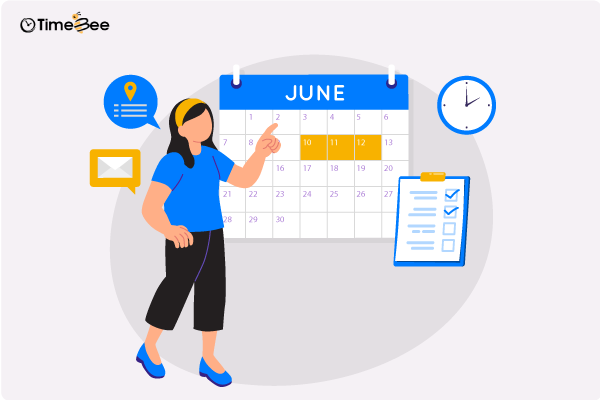Content
Content
The freelance workforce has reserved a permanent seat for itself in the global labor market. Freelancing has revolutionized traditional business models and human resource management. How you manage your freelance workforce can make or break your business in the modern age.
While freelancers can give a huge boost to your business, they can be challenging to manage. Many say that managing freelancers is like herding cows or even tougher. For starters, you haven’t met these people face-to-face, so there’s not much you know about them.
Managing a group of workers with different personalities, work styles, and schedules, all from a distance, sure seems like a migraine-inducing chore. Beyond that, ensuring their productivity and work quality is an added catch.
All these factors indicate that managing a freelance workforce can be a 24/7 job.
But no matter how hard it gets, companies must streamline their freelance management to optimize their usage.
Let’s see how you can do it through our tried and tested 8-step process:
1. Assess Your Needs
Before jumping at hiring, sit down and assess your business needs. Why do you need a freelancer? What circumstances necessitate adding freelancers to your team?
Perhaps a client pushed back the deadline, requiring more hands on the deck. Or maybe you accepted a job that you’re a novice in, pushing you to hire a subject matter expert.
Other than the obvious ones, consider the less prominent aspects. The size of your existing workforce, client demands, your current team’s capacity etc., everything needs to be kept in mind before you decide on hiring freelancers.
If you think any of these spheres need a fresh perspective or expert knowledge and experience, hire freelancers.
2. Set a Freelancer Budget
Like all other business expenses, you must set aside a budget for freelancers. This step should ideally be incorporated when preparing the annual budget so that you don’t spring for unexpected expenses.
Also, having an allocated figure could help make hiring decisions. Depending on your budget, you could decide which markets to search in or if you can afford to add more freelancers to your team.
3. Set up a Standard Payment Method
Since freelancers aren’t on a fixed salary or hourly rate, compensation must be based on individual projects. Although managing freelancer payments can be challenging, it’s doable with careful planning and the right tools.
Careful planning can help establish a payment schedule that satisfies both parties involved. Moreover, you might find that minimal effort is required on your part to guarantee accurate and timely payments to your freelancers.
Once you’ve established a budget for freelancers, you can utilize various platforms to transfer the agreed-upon compensation. Exploring online services can help streamline and ensure the accuracy of payments. This approach enables you to stick to the determined payment timelines, which is particularly important as many freelancers and gig workers prefer prompt payment without unnecessary delays.
Some other considerations when paying freelancers are:
- Ensure Compliance with Tax Laws– make sure both parties are aware of the local tax laws and any extra deductions or legal repercussions associated with your payment method.
- Get Terms and Conditions on Paper– all the details must be recorded with mutual agreement between both parties. The calculation method, rate, currency, tenure of service or any underlying conditions- everything should be agreed upon before starting work.
- Conduct a KYC Check– Knowing Your Client checks are necessary when sending money to freelancers abroad. It helps verify if the freelancer has a criminal record, so you don’t get involved in unpleasant business.
- Choose the Correct Payment Method– will you pay upfront, per hour, upon handover, or per milestone?
4. Hire the ‘Right’ Freelancers
Hiring freelancers can be trickier than it seems. Being remote sure has its disadvantages when vetting candidates.
While a freelancer might appear impressive on paper, it’s essential to extensively evaluate them before making a decision. Hiring for skills and experience sure sounds great, but prioritize hiring freelancers who also demonstrate professionalism, trustworthiness, strong communication skills, and openness to feedback.
A freelancer may deliver output according to your criteria, but if they go over the deadline, keep ghosting you, or demand more money, you probably won’t call it a ‘good experience’.
Here are a few tips to guide you in choosing the right freelancers:
- Evaluate Credentials
Make sure their education, experience, and other credentials match what they shared in the CV. This can help you discern if they’ve handled similar projects in the past or if they have the necessary knowledge. For some domains, having the necessary education level is imperative, e.g., backend development or accounting.
- Ask for Samples
Once you’re happy with the prerequisites, ask candidates to produce samples. This is the best way to make sure they’re being honest, and their work matches their vibe.
- Explore their Social Media Accounts
Although not necessary, for sensitive-nature projects, you can check the freelancer’s social media accounts—Twitter, Instagram, or Facebook—to make sure they’re who they claim to be.
Exploring the personal side of prospective workers can be a great way to determine if they’ll be reliable workers. That being said, don’t overstep any ethical or legal boundaries by using personal information against them.
- Check out Client Reviews
If you’re hiring someone from a freelancing platform, chances are you’ll find reviews and testimonials from past clients. If the majority of the reviews seem positive, hire them.
5. Define Project Details and Expectations
After hiring the appropriate freelancers, it’s crucial to ensure they understand the reasons behind their hiring and the work expected out of them. For this, provide thorough project details, listing requirements, expectations, deadlines, meeting agendas, and the designated individuals for reporting purposes.
Since freelancers don’t go through the usual onboarding process, make sure you give all the essentials they require to work effectively.
How to Define Project Details?
Here’s all you need to communicate to newly hired freelancers:
- Project Requirements
Freelancers with a clear picture of the project will likely deliver successfully. You must spell out the project’s goals, specified outcomes, and scope.
Precisely outlined project requirements can prevent the waste of time and resources, resulting in cost reduction. There is also improved communication, where both parties can exchange ideas or clarify confusion.
A smooth sailing from the start may predict a successful voyage.
- Project Expectations
Once your clients communicate their requirements, make sure you share them precisely with the freelancer managing the project.
Expectations could include precise outcomes, measures of success, ways to track progress, project budget, and any project scope or deadlines changes.
Failure to produce expected deliverables may impair your client relationship and waste valuable resources and time.
- Available Resources
Before a freelancer starts working, make sure you handover all the necessary documents, hardware, software tools that they’ll require in the project. Additionally, any extra help or resources must be readily available.
- Reporting Details
Reporting details are often critical yet ignored.
Ensuring freelancers consistently report their progress to the designated supervisors may be critical in overseeing their progress. Without clear guidance, freelancers might field requests from various team members, diverting their efforts away from their designated tasks.
6. Monitor Productivity by Automation
As discussed earlier, overseeing the progress of freelancers could be challenging since they’re not physically present with you. But today, there are plenty of automated tools and software to assist you in tracking freelance productivity. They also decrease administrative burden and streamline processes across projects and team members.
Time-Tracking
The best way to ensure progress is consistent and measurable is to ask freelancers to track their time. This way, you will have real-time data on who is working on what and how much are they spending on each specific task.
TimeBee is a great option for time tracking and progress monitoring, regardless of your business size. It has a range of features that take over the administrative part of your job. Employees of all types can use it as a personal assistant to stay accountable for their work hours and goals.
TimeBee automatically records how your freelancers work all day, divided between different tasks and projects. The automated timesheets are accurate and act as a watchdog to make sure timelines are adhered to, and productivity is maintained.
When monitoring teams and projects, TimeBee tells you the productivity levels of members in comparison to each other. This way, you may be able to establish who is being most productive and working the hardest.
Inter-team comparisons are also ideal for optimal resource allocation. For example, from the team dashboard, if you see that Henry has the capacity to take over some of Michael’s work, you can reassign him at the latter’s tasks. This may prevent Michael from burning out, and Henry to realize his full potential.
You can also generate activity summary reports to have a deeper insight into how freelancers are spending their time. This means you can peek into their web & app usage, distinguish between productive and unproductive hours to determine how diligently they’ve worked so far.
If you see a project lagging behind or a freelancer running behind schedule, you can discuss the possible reasons in a meeting. Here, you can use real-time insights to discuss your concerns and resolve any issues or queries that may be holding them back.
Lastly, TimeBee allows you to calculate compensation for freelancers easily by maintaining precise payrolls. Since it’s already tracking their hours, all you need to do is enter the hourly rate, add currency and voilà! You have the cost of billable hours.
It’s also a great feature for managing labor costs in projects that are primarily handled by freelancers, facilitating your project cost management.
Last but not the least, you can surveil freelancers by screenshot monitoring. TimeBee captures spontaneous screenshots of workers’ devices, to generate proof of progress. This is a great tool to provide clients with project insights if they want to see milestones.
Also, it’s a smart accountability tool for freelancers who know they’re being watched, so they better not commit time theft.
Want to Manage Your Freelance Workforce Efficiently?
Get TimeBee Today
Project Management
Freelancers are often hired to work on specific projects. For this reason, it is only logical to employ project management tools to track productivity throughout project milestones.
For instance, GanttPro ensures all of your team members keep track of their daily tasks. A visually appealing Gantt chart makes it easy for everyone to see how well the project progress is going. Since it has collaboration features, members can share important details and updates.
Scheduling
An automated calendar and scheduling tool makes it easier to organize time. For example, Calendar is a popular scheduling software. It takes care of booking, organizing and updating meetings and events on your calendar.
It can integrate across multiple platforms, so that you can manage your schedule accordingly. You may also customize who can see your schedule, so that you’re not distracted by unwelcomed work or meetings.
7. Prioritize Communication
Even the most talented individuals working together may not succeed without effective communication. You’ll need to invest in automated communication tools to ensure communication is consistent and relevant.
Using robust communication platforms becomes necessary for freelancers since that’s the best way to build a bond with them.
Slack stands out as a widely used communication tool that facilitates seamless coordination. Users can create channels tailored to specific topics for group discussions or communicate directly with individuals.
Additionally, Slack enables file attachments, the sharing of briefs, and the prioritizing of essential documents among team members.
8. Give and Receive Feedback
Giving constructive feedback is vital for guiding freelancers towards delivering precise and successful work. Establishing a structured feedback system is essential. It enables you to:
- promptly returning edits or reviews within a limited time frame
- holding regular meetings
- providing written feedback consisting of details and specifics
However, good managers ensure that feedback is two-way. Invite the freelancer to give you honest feedback on your communication style, workload and the quality of support you’re giving them.
It is essential to join forces and communicate frequently to achieve success.
Managing Freelancers: Challenging but Worth It
The freelance workforce is here to stay and is predicted to become the major workforce in the US by 2027. From startups to multi-billion dollar companies, everyone is adding freelancers to their teams. That’s mainly because the talent shortage for in-demand skills has encouraged businesses to hire freelancers with specific skill sets.
Streamlining a freelance workforce demands a strategic approach with effective communication, clarity, automation, and other crucial elements. Employing the 8-step guide can enable you to foster freelancer productivity.
With the expanding freelance landscape, finding ways to optimally manage freelancers has become vital to maintaining a competitive edge.
Track Your Freelance Team From Anywhere!
Download TimeBee
Similar Reading



